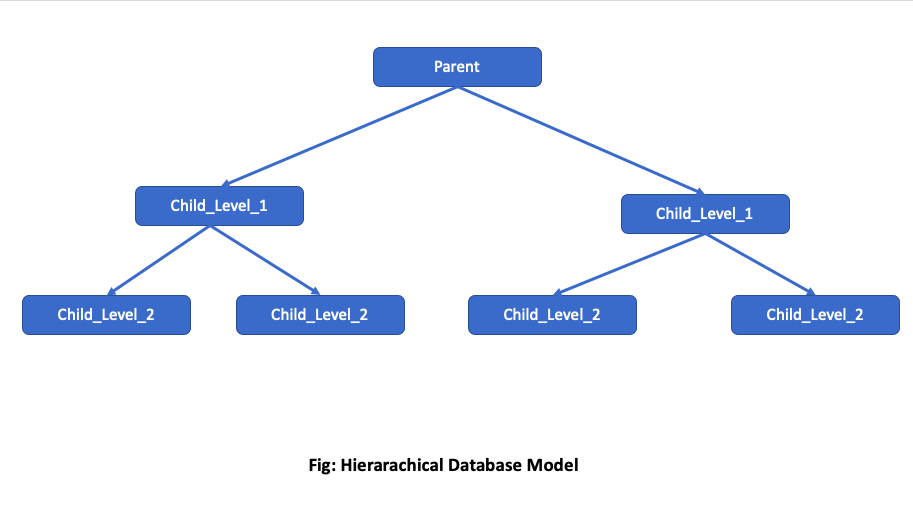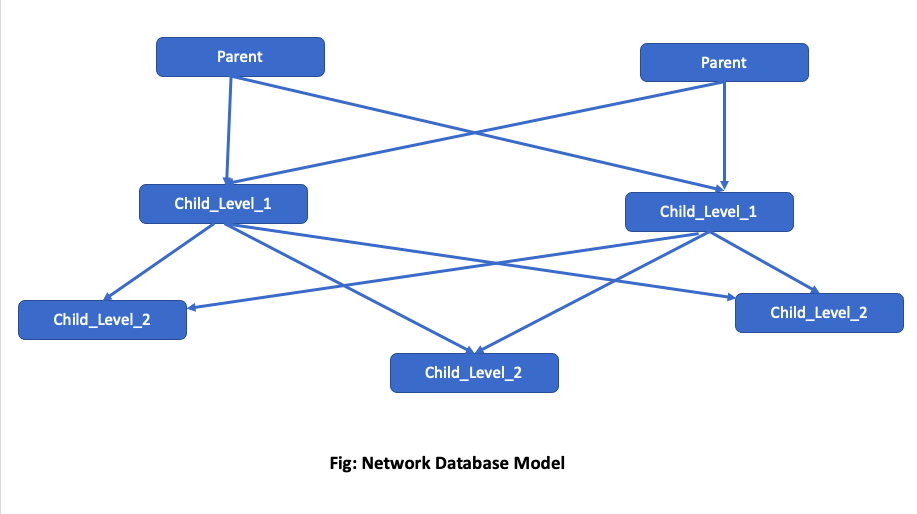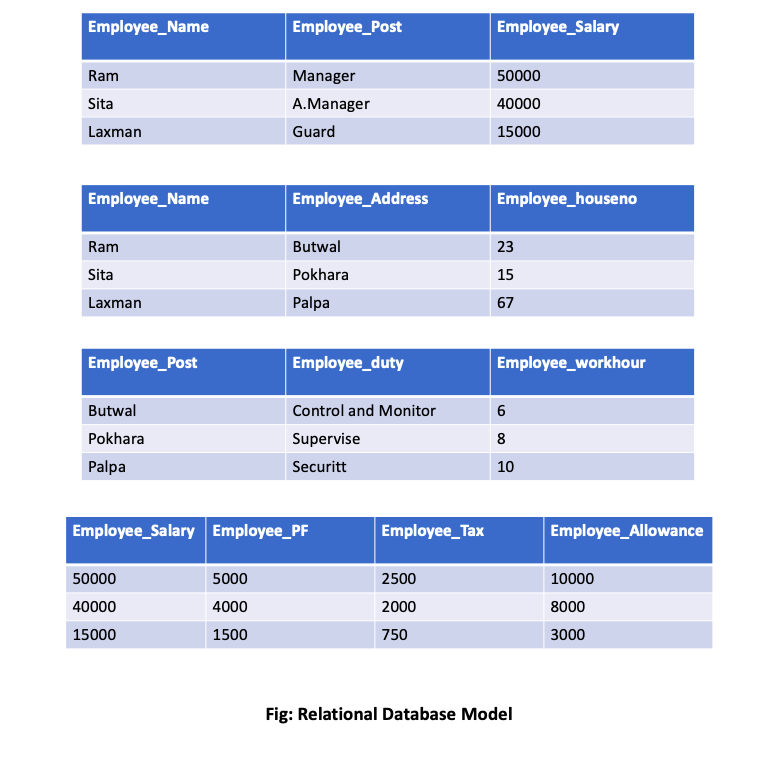Types of database model
While designing database, we need to describe the structure of a database, how data are organized and how they are related with each other. This is done by following appropriated database model. Thus, Database is a collection of conceptual tools describing data, relationships etc. There are several database models used. Some of them are explained below.
Types of Database Model
What is Hierarchical Database Model?
These are the oldest and old-fashioned database model in which records are logically organized into a hierarchy of relationships. A hierarchical database is arranged logically in an inverted tree pattern. All records in hierarchy are called nodes i.e. either parent node or child node which are related to the each others in a parent-child relationship. Each parent record may have one or more child records, each can have only one parent. The top level record in the hierarchy is called the root record.

Advantages of hierarchical database model
- It is the easiest model of database.
- This model is more secured because nobody else can see and modify a child without consulting its parent.
- If parent is known searching is faster.
- It is suitable for 'One-to-many' relationship handling.
- It follows top down approach.
Disadvantages of hierarchical database model
- It is old fashioned, outdated database model.
- It is non-flexible database model that means modification and addition of child without consulting the parent is impossible or very complex process.
- It can't handle Many-to-Many relationships.
- It increases data redundancy as same data can be stored in different places.
- If parent node is deleted, all the child nodes associated with it are deleted automatically.
What is Network Database Model?
Network database model is a modified version of the hierarchical database that overcomes the limitation of hierarchical model. In Hierarchical single child not can’t have multiple parents rather in network database model each node (child) may have several parents. A network database model views all records in sets. The network database model has a higher level of flexibility than hierarchical. It is easier to restructure the information stored in this structure, since the path of relationship enables to store member records in an arbitrary manner. As the number of nodes in the network increases operation and maintenance of this structure becomes complicated. It is less user-friendly and secured when compared to the hierarchical structure.

Advantages of Network Database Model
- 'many-to-many' relationship is possible which makes it more flexible than hierarchical
- It reduces data redundancy i.e. repetition of data.
- Searching is fast because of multi-directional pointers.
Disadvantages of Network Database Model
- It is one of the complex database models as it can also follow bottom up approach.
- As nodes increases, table and relationship increases which needs larger program to handle.
- Pointers needed in this model increases over head of storage.
- It is less secured compared to hierarchical model, as its nodes are open to all.
What is Relational Database Model?
In a relational database model, data are arranged in two-dimensional table I.e. in rows and column, which are easy for a user to develop and understand. This type of model can also be described through mathematical relations. In general people often work with tabular form data, it is easy for most of them to understand the structure used in a relational database as data are in table. The name relational database model is derived from the fact that each table represents a relation, and each row of table corresponds to a single record of the database. It is a highly flexible to program and retrieve data. It can be efficiently used even with a computer which has limited memory and processing capability. It is much easier to use since it enables the computer system to accommodate different types of enquiries in an efficient manner. But, its processing efficiency is comparatively low; no processing can be done without establishing the data relationships. Example

Advantages of relational database model
- Since one table is linked with other, some common fields and rules implemented on one table can easily be implemented to another.
- It has very less data redundancy.
- Normalization (Breaking of single complex table into several simpler one) of the database is possible.
- Rapid processing of database is possible.
- If new data is to be added to an existing database, it is not necessary to redesign the database afresh. Rather, new table containing the new data can be added to the database and these tables can be related to the existing tables.
Disadvantage of relational database model
- It is more complex than other models.
- Too many rules makes database non-user-friendly.



